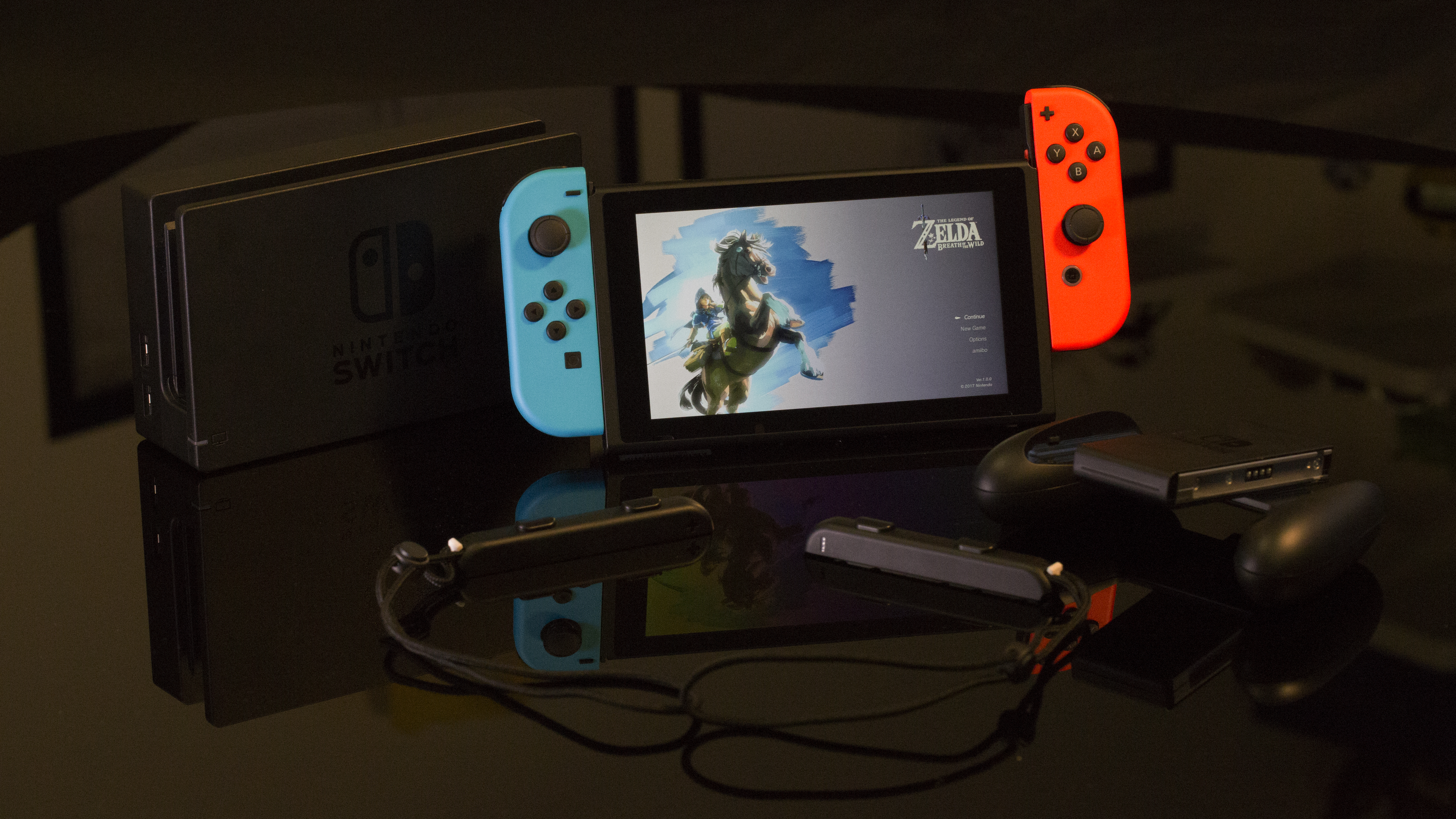Nintendo Switch's success shows that gaming is about more than graphics
One year on and the Switch is going strong

For a long time, Nintendo hasn't been a gaming company that touts the latest and greatest technology to sell its hardware. While Sony and Microsoft vie for the 4K crown with the powerful PlayStation 4 Pro and Xbox One X, for example, Nintendo has announced a DIY cardboard accessory for the Nintendo Switch that makes use of motion sensors and infrared.
It’s a somewhat risky approach that doesn’t always work – just look at the tragedy that was the Wii U – but when Nintendo gets the recipe right, you can be guaranteed of something pretty special. After one year of success with the Switch, it would appear that this is one of those times Nintendo’s calculated risk has paid off.
The Nintendo Switch is far from the most powerful console on the market, but Nintendo has never promised power. Instead, it promises accessibility, fun and play on a system that makes the most of what it has. That’s the thing about Nintendo – it uses relatively inexpensive technology in innovative ways to craft gaming experiences that stand out for more than graphical reasons.
Past the point of power
The Nintendo Switch isn’t much more powerful than the Wii U that came before it, yet it’s been significantly more successful, with far more games and far greater sales. This is because with the Switch, Nintendo took the small improvements to the technology it had available to create something with far greater appeal – something that took the potential of the Wii U and ran with it.
The Tegra X1 chip isn't a groundbreaking choice of processor, but for Nintendo it was ideal: affordable, and with just enough power to create the console the company had envisioned but been unable to create with the Wii U.
It really doesn't matter that the Switch isn't the most powerful console around, because it's something completely different. Those boundaries that always existed between handhelds and home consoles have been significantly blurred and now we have games that fit into our lives no matter their size.
Suddenly the morning commute isn’t just a time to play a short non-committal game; it’s the perfect opportunity to dip into your 100-plus hour adventure in Skyrim.
Sign up for breaking news, reviews, opinion, top tech deals, and more.
It's interesting that many people have been put off handheld gaming because they couldn't play on their TV, yet when Nintendo finally releases a handheld that can do both most people don't seem to be bothering with the dock at all. It turns out we weren't beholden to big screens – we were just waiting for the handheld device that didn't make them feel necessary.
There's always going to be room for powerful consoles, and we don't doubt we're always going to want them but variety is the spice of life, after all.

Older games are given an entirely new appeal when you’re free to play them somewhere other than your sofa. Portable is no longer a synonym for lesser or limited – it’s now just a different way to play. It’s easy to understand why developers are being hounded for Switch ports of their games; now that our eyes have been opened and we know we can have uncompromised gaming experiences on the go, we want that for everything.
Some of the latest games are just too demanding for Nintendo’s console, but that isn’t stopping people buying. Rather than dismissing the Switch because it can’t support the latest graphics, people are appreciating it for what it can do, and are exploring different kinds of games, like indies, because the console’s graphical limitations are somewhat balanced by its lifestyle flexibility.
Gaming is more than graphics; landscapes don't need to be 4K and HDR to be stunning, and we're more than able to fill in the gaps ourselves when the draw distance isn't quite up to scratch. A big part of the fun of gaming comes from the game itself and the way we play it and this is something Nintendo seems to understand.
Getting the basics right
By getting the technological basics and consumer message of the Switch right, Nintendo has been able to start addressing many of the issues that have held its previous consoles back. One of the biggest issues being addressed by the Switch is third-party support.
We’ve always been willing to purchase Nintendo consoles because the company produces excellent first-party games that you can’t get anywhere else, but not everyone is interested enough in Nintendo’s offerings to go out and buy its hardware. Nintendo has lost many potential consumers simply because it’s not been able to offer the kind of software range as other console producers.
Thanks to the innovation of the Switch and the fact that Nintendo was able to show its capabilities for itself with one of the most stunning Legend of Zelda games we’ve seen in years, third parties have paid attention. By having only one release title, Nintendo was quite clearly saying to developers "look what we can do", and they couldn't help but pay attention. Now we have very un-Nintendo games on a Nintendo platform and a far wider gaming audience is interested.

With the Switch, Nintendo has freed players from the traditional constraints of a home console and freed itself from its reputation as a kids-only console, leaving us with a device that’s easy for everyone to love. But love is a fickle thing.
As it enters its second year, the Nintendo Switch has a lot of promise, but there are still problems to be solved if the console is going to maintain its momentum. In some areas being different to your competitors is less of a quirk and more of a serious shortcoming.
The main thing Nintendo will need to tackle is online functionality. The Switch’s online services are woefully limited with a complete lack of cloud saves and an inconvenient multiplayer. Our hopes are high that this will be solved with the launch of the paid service later this year, but until that happens, the Switch has a pretty glaring flaw in a market where online gaming has become the norm.
Sustaining the momentum

Another problem comes from the Switch’s third-party support. So far we’ve seen some surprising and exciting ports to the console, from Doom to LA Noire, but these are ports of older games coming months to years after the originals. Nintendo has garnered the best third-party support it’s had in years, but soon the novelty of the console will wear off and players will want to see newer Switch games released at the same time as their PlayStation 4 and Xbox One counterparts.
However, despite these problems (and they are problems that will only become more obvious as time goes on), game lovers the world over have taken the switch into their hearts.
The Switch is the kind of console only Nintendo could make a success. While it’s not the most powerful games console around, it’s the leader in its very small hybrid field and it offers experiences that none of its competitors can.
With the Switch, we have a console that combines the portable appeal and touch-screen innovations of the DS line with the motion-controlled novelty of the Wii, and takes the hybrid dream of the Wii U to its final destination. It's peak Nintendo and we're looking forward to seeing where it goes from here.

Emma Boyle is TechRadar’s ex-Gaming Editor, and is now a content developer and freelance journalist. She has written for magazines and websites including T3, Stuff and The Independent. Emma currently works as a Content Developer in Edinburgh.